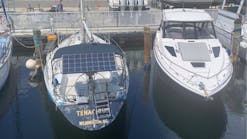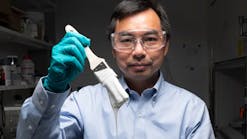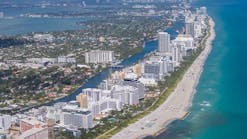According to the International Energy Agency (IEA), of which the U.S. is still a member country, industry and buildings accounted for over 90 percent of global electricity energy consumption in 2019, with space cooling consuming 17 percent of the total. IEA says space cooling is the fastest-growing energy consumer in buildings and estimate that between now and 2050, the sales rate for new AC units will average 10... per second!
That’s great for our industry, but unless equipment efficiencies are substantially improved – and consumers are incentivized to purchase the higher efficiency equipment – it's bad for our planet. Even where high-efficiency AC is available, most of the equipment purchased is more than 50 percent less efficient. IEA goes on to predict that, by 2050, nearly 70 percent of the world’s buildings (residential and commercial) will be air-conditioned, with Asia accounting for 50 percent of the total.
With that in mind, at least one Asian nation – Singapore – is doing something about it. The small, 280-sq-mi island, located between Malaysia and Indonesia, is 1.5 degrees north of the equator and has a tropical rainforest climate. It is nearly always warm and wet, with a year-round average temperature of 84 deg. F. and daytime relative humidity of 60 to 100 percent. Their approach has been to build what is arguably the largest central plant in the world.
Using two chillers and some three miles of piping installed in large underground tunnels 80-feet below, its upscale Marina Bay shopping, entertainment, and financial district, the system provides 600 tons/hour of 40 deg. F. supply, 55 deg. F. return, chilled water. Operated by Singapore District Cooling (SDC), a subsidiary of Singapore Power (SP), the plant has been successfully operating for three years and claims that they save 40 percent of the energy of DX AC. Since most of Singapore’s energy comes from natural gas, that translates to an emissions reduction equivalent to taking 10,000 cars off of the road.
This has been a real boon to Singapore, too, since the island has for the past 60 years been warming at twice the rate as the rest of the world, averaging 0.5 deg. F. warmer every 10 years. If that trend continues, caused in part by increased heat island effects as the city-state grows, daytime temperatures could reach 99 deg. F. by 2100.
Although we have district cooling plants in the U.S., some in municipalities, but mostly at college/university campuses and airports, this project makes a great case for taking another look at expanding urban central plants.
############
A regular contributor to HPAC Engineering and a member of its editorial advisory board, the author is a principal at Sustainable Performance Solutions LLC, a south Florida-based engineering firm focusing on energy and sustainability. Contact him at [email protected].










